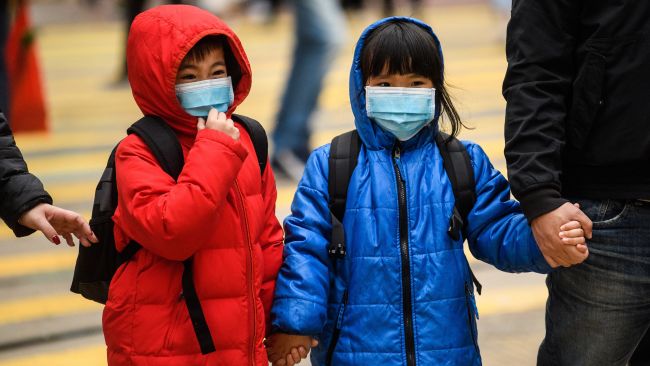
Washington– COVID-19 may behave like other common-cold coronaviruses in the next few years, affecting mostly young children who have not yet been vaccinated or exposed to the virus, according to a modelling study published on Thursday.
The US-Norwegian team noted that because COVID-19 severity is generally lower among children, the overall burden from this disease is expected to decline as the SARS-CoV-2 virus becomes endemic in the global population.
“Following infection by SARS-CoV-2, there has been a clear signature of increasingly severe outcomes and fatality with age,” said Ottar Bjornstad from the University of Oslo in Norway.
“Yet, our modelling results suggest that the risk of infection will likely shift to younger children as the adult community becomes immune either through vaccination or exposure to the virus,” he said.
The study, published in the journal Science Advances, noted that such shifts have been observed in other coronaviruses and influenza viruses as they have emerged and then become endemic.
“Historical records of respiratory diseases indicate that age-incidence patterns during virgin epidemics can be very different from endemic circulation,” Bjornstad said.
“For example, ongoing genomic work suggests that the 1889-1890 pandemic, sometimes known as the Asiatic or Russian flu — which killed one million people, primarily adults over age 70 — may have been caused by the emergence of HCoV-OC43 virus, which is now an endemic, mild, repeat-infecting cold virus affecting mostly children ages 7-12 months old” he said.
Bjornstad, however, cautioned that if immunity to reinfection by SARS-CoV-2 wanes among adults, disease burden could remain high in that group, although previous exposure to the virus would lessen the severity of disease.
“Empirical evidence from seasonal coronaviruses indicates that prior exposure may only confer short-term immunity to reinfection, allowing recurrent outbreaks, this prior exposure may prime the immune system to provide some protection against severe disease,” said Bjornstad.
“However, research on COVID-19 shows that vaccination provides stronger protection than exposure to the SARS-CoV-2 virus, so we encourage everyone to get vaccinated as soon as possible,” he explained.
The team developed a “realistic age-structured (RAS) mathematical model” that integrates demography, degree of social mixing, and duration of infection-blocking and disease-reducing immunity to examine potential future scenarios for age-incidence and burden of mortality for COVID-19.
The researchers analysed disease burden over immediate, medium and long terms — 1, 10 and 20 years, respectively.
They also examined disease burden for 11 different countries — China, Japan, South Korea, Spain, UK, France, Germany, Italy, the US, Brazil and South Africa — that differed widely in their demographics.
The team used data from the United Nations for each of these countries to parameterise the model.
The team’s model assumes that the reproduction number (R) — or the level of transmissibility — on any given day is linked to the amount of mobility on that day.
The model also incorporates a variety of scenarios for immunity, including both independence and dependence of disease severity on prior exposure, as well as short- and long-term immunity.
“For many infectious respiratory diseases, prevalence in the population surges during a virgin epidemic but then recedes in a diminishing wave pattern as the spread of the infection unfolds over time toward an endemic equilibrium,” said Ruiyun Li, a postdoctoral fellow at the University of Oslo.
“Depending on immunity and demography, our RAS model supports this observed trajectory. It predicts a strikingly different age-structure at the start of the COVID-19 epidemic compared to the eventual endemic situation, he added.
The researchers noted that in a scenario of long-lasting immunity, either permanent or at least 10 years, the young are predicted to have the highest rates of infection as older individuals are protected from new infections by prior infection.
Jessica Metcalf, an associate professor at Princeton University, US, noted that this prediction is likely to hold only if reinfections produce only mild disease.
However, the burden of mortality over time may remain unchanged if primary infections do not prevent reinfections or mitigate severe disease among the elderly, she added.
Follow this link to join our WhatsApp group: Join Now
Be Part of Quality Journalism |
Quality journalism takes a lot of time, money and hard work to produce and despite all the hardships we still do it. Our reporters and editors are working overtime in Kashmir and beyond to cover what you care about, break big stories, and expose injustices that can change lives. Today more people are reading Kashmir Observer than ever, but only a handful are paying while advertising revenues are falling fast. |
| ACT NOW |
| MONTHLY | Rs 100 | |
| YEARLY | Rs 1000 | |
| LIFETIME | Rs 10000 | |













